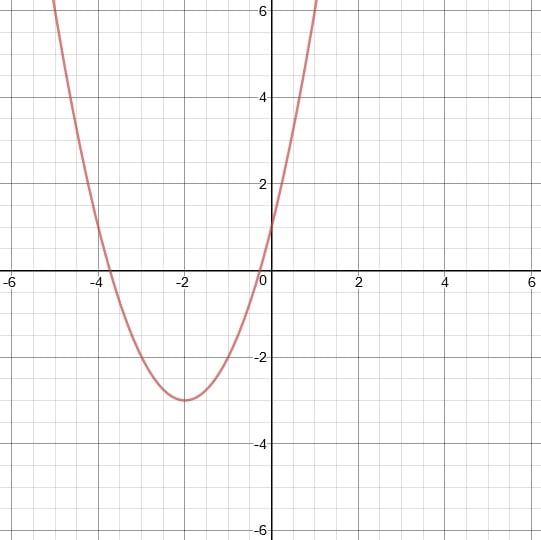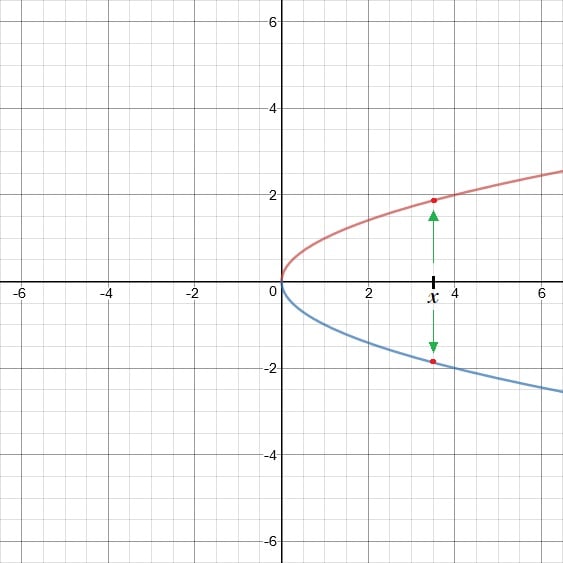Operations and Evaluations of Functions
A function is a relation which states that for every possible x there is one and only one output for y.
A relation is a function if it passes a vertical line test -- meaning that no vertical lines intersect the graph at more than one point.


function not a function
The notation f(x) means that we have a function named f and the variable in that function is x. (It does NOT mean "f times x.")
The domain of the function describes values of x that can be put into the function. The range of the function describes the values of the output.
Evaluating a Function
Evaluating a function means to substitute a variable with its given number or expression.
Example
Given f(x) = 2x + 4, evaluate f(5).
This question asks you to substitute 5 for x and simplify.
f(5) = 2(5) + 4 = 14
Adding and Subtracting Functions
To add functions, add their outputs; to subtract functions, subtract their outputs. You can perform these operations on the functions themselves; just remember to simplify the resulting expressions.
Example
Given f(x) = x2 and g(x) = 4x + 1, find (f + g)(6) and (f − g)(x).
The expression (f + g)(6) really means f(6) + g(6). There are two ways you can do this-- you can evaluate f(6) and g(6) individually and add the results, or you can find (f + g)(x) and evaluate it at 6.
For the first option, we have f(6) = 62 = 36 and g(6) = 4(6) + 1 = 25. This gives us f(6) + g(6) = 36 + 25 = 61.
Using the other method, we have (f + g)(x) = (x2) + (4x + 1) = x2 + 4x + 1. Evaluating, (f + g)(6) = 62 + 4(6) + 1 = 61.
The expression (f − g)(x) means f(x) − g(x). You find this function by subtracting the individual functions. Remember to use the distributive property when subtracting expressions.
(f − g)(x) = f(x) − g(x) = (x2) − (4x + 1) = x2 − 4x − 1
Multiplying a Function by a Constant
To multiply a function by a constant, multiply the output by that constant. Remember to use the distributive property.
Example
Given f(x) = 4x − 1, find 2f(x).
f(x) = 4x − 1
2f(x) = 2(4x − 1) = 8x − 2
Multiplying a Function by a Function
To multiply a function by another function, multiply the outputs.
Example
Given f(x) = 2x and g(x) = x + 1, find (fg)(x) and (fg)(3).
The expression (fg)(x) means f(x)g(x). Multiply the expressions, using the distributive property when necessary.
(fg)(x) = f(x)g(x) = (2x) × (x + 1) = 2x(x + 1) = 2x2 + 2x
As with the other operations, you have the option of evaluating (fg)(3) by either multiplying f(3) and g(3) individually, or by evaluating (fg)(x) at 3.
f(3) = 2 × 3 = 6, g(3) = 3 + 1 = 4, (fg)(3) = 6 × 4 = 24
(fg)(x) = 2x2 + 2x, (fg)(3) = 2(3)2 + 2(3) = 18 + 6 = 24
Practice
Given that f(x) = 3x2 and g(x) = −2x + 7, find the following:
1. f(8)
2. f(2) + g(5)
3. (f − g)(x)
4. (f + 2g)(4)
5. f(x)g(x)
6. [g(x)]2
Answers
1. 192
2. 9
3. 3x2 + 2x − 7
4. 46
5. −6x3 + 21x2
6. 4x2 − 28x + 49